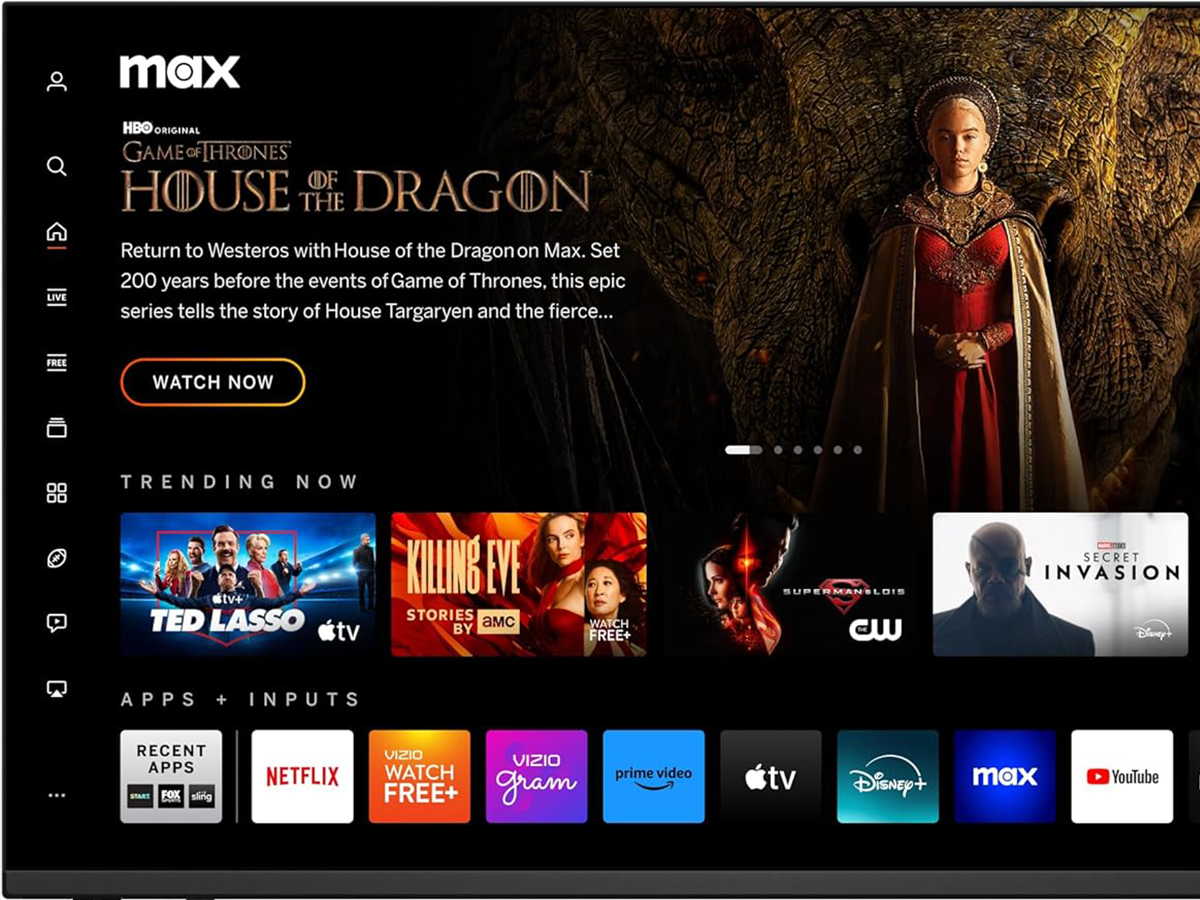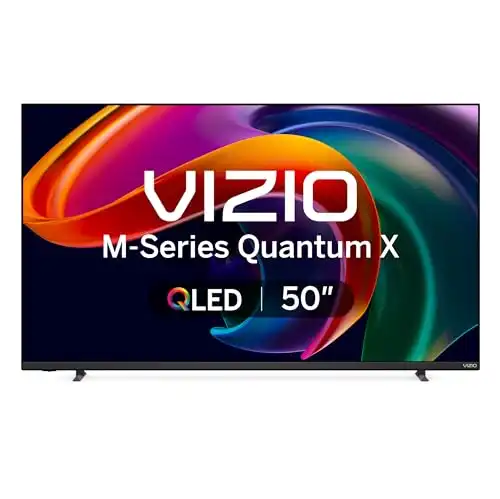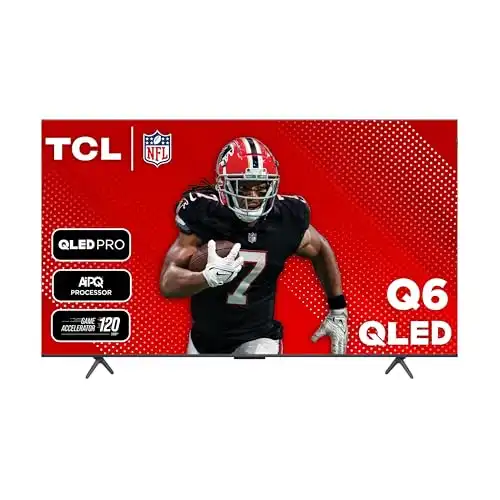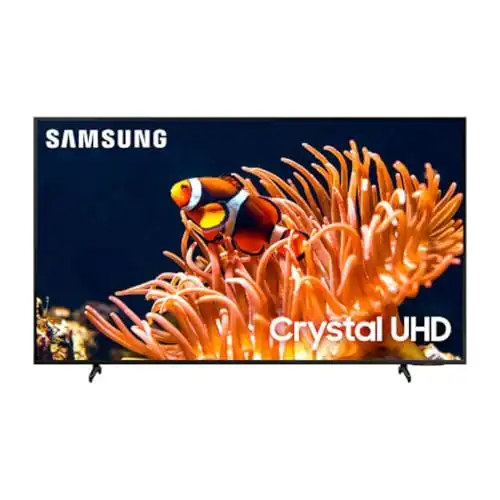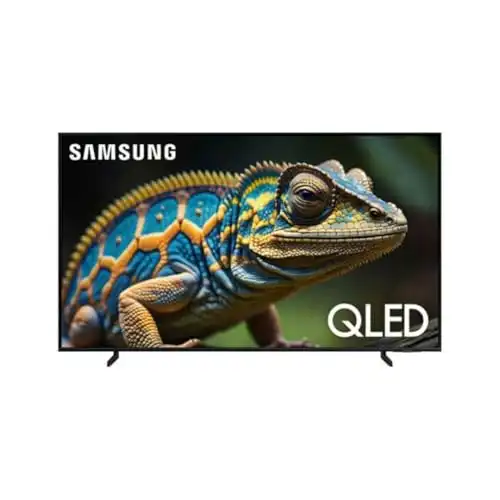This site contains affiliate links to products. We may receive commission for purchases made through these links. Price at time of publish date may change.
Imagine this: You just got your hands on a new gaming console, fired up your favorite game, and something feels… off. The movement isn’t smooth. The colors are washed out. And that epic boss battle you’ve been waiting for doesn’t pack the punch you expected. If this sounds familiar, your TV might be holding you back.
A lot of gamers don’t realize that a regular TV can seriously impact their gaming experience. Bad input lag can make fast-paced games feel sluggish. Screen tearing can ruin those perfect headshots. And, let’s not even start on how frustrating it is. Dark scenes often turn into a murky mess. You can’t spot your enemies.
But here’s the good news: You don’t need to spend a fortune to fix these problems. The market is full of TVs that can transform your gaming setup—if you know what to look for. We spent countless hours to find the best TVs. We compared specs, tested features, and read gamers’ feedback.
We found options with 4K resolution, low input lag, and HDMI 2.1 support. These features were once only in the most expensive models. Some of our picks even surprised us with capabilities we didn’t expect at their price points.
How to Pick the Right Gaming TV
Before diving into our picks, let’s talk about what really matters when buying a TV for gaming. Skip this section, and you might end up with a TV that looks great on paper but falls short where it counts.
First up is input lag – this is how fast your TV responds to controller inputs. For gaming, you want this as low as possible. Anything under 20 ms is good, under 15 ms is great. Next, look at the refresh rate. A 120 Hz TV means smoother motion and better response in fast-paced games. Most new consoles can take advantage of this feature.
HDR support is another big one. Games are getting more colorful and dramatic, and good HDR makes those visuals pop. But not all HDR is created equal—you want a TV that can get bright enough to make those highlights shine.
Don’t forget about HDMI 2.1 ports if you’re using newer consoles. This lets you play games at 4K and 120Hz. Older HDMI versions don’t support that.
Size matters too, but maybe not how you think. Bigger isn’t always better—it depends on your room setup and how far you sit from the screen. For most gaming setups, anything between 50 and 65 inches hits the sweet spot.
Meet Our Contenders
Here are the TVs that made our list:
- VIZIO MQX-Series: A feature-packed 50-inch powerhouse with serious gaming chops
- TCL Q65 Series: The 55-inch budget-friendly option that punches above its weight
- Samsung DU8000: A sleek 55-inch model with impressive gaming features
- Samsung Q60D: A compact 32-inch QLED that’s perfect for smaller spaces
Why You Should Trust Us
1 – The Winner
- QLED 4K with Dolby Vision HDR
- Gaming up to 240Hz at 1080p
- AMD FreeSync Premium VRR included
- Built-in WiFi 6E Fast Connection
Why We’ve Picked It
The VIZIO MQX hits all the right notes for gaming. The 4K display is sharp. It makes text easy to read in strategy games. It lets you spot far-off enemies in shooters. Colors look natural but vibrant. They’re perfect for realistic racing games and colorful platformers.
What really sets this TV apart is how it handles motion. Fast-moving objects must stay clear and sharp. This is crucial in racing games and shooters, where you track enemies. The VRR support means no screen tearing, even in the most intense gaming moments.
The TV’s gaming menu is simple. It shows key info, like frame rate and HDR status. HDMI 2.1 ports mean you’re set for years. This TV can handle anything that current gaming consoles can throw at it.
Sound quality is decent enough for casual gaming, but serious gamers might want to add a soundbar. The built-in speakers work. But, they don’t match the great visuals.
For the price, this TV delivers features usually found in much more expensive models. VIZIO clearly focused on what gamers need. They ignored fancy extras that don’t matter for gaming.
Read also: Best TV for PS5: We Compared 4 TVs to Find the Perfect Gaming Display
2 – Runner Up
- Auto Game Mode switches fast
- HDR Pro+ enhances gaming visuals
- Game Accelerator reduces input lag
- Google TV gaming hub access
Why We’ve Picked It
The TCL Q65 is a solid pick for gamers who want good performance without spending too much. It handles 4K gaming well, and the picture quality is impressive for the price point.
What’s really nice is how easy everything is to use. Plug in your console, and the TV automatically adjusts its settings for gaming. Input lag is so low that you won’t notice any delay between pressing buttons and seeing the action on screen.
The Google TV system is snappy and clean. You can quickly switch between your console and streaming apps, with no hassle. The remote is simple but gets the job done.
For multiplayer gaming sessions, the wide viewing angles are great. Everyone gets a good view of the screen, no matter where they’re sitting. The TV also handles reflections well, so you can game during the day without glare issues.
It supports gaming features like Auto Low Latency Mode (ALLM). But, it lacks some extras, like 120Hz gaming at 4K. For most gamers, especially on a budget, this TV is ideal. It balances features and value.
Read also: Before You Buy a 100/98 Inch TV, Read These Important Tips
3 – Simple & Sleek
- Motion Xcelerator smooths game movement
- Gaming Hub centralizes gaming apps
- Object Tracking Sound follows action
- Ultra slim design saves space
Why We’ve Picked It
Samsung’s DU8000 is an interesting choice for gamers. It nails the basics—good picture quality, low input lag, and solid gaming features. The 4K resolution makes everything look sharp, from game text to detailed environments.
The built-in Gaming Hub is actually useful, not marketing talk. It puts all your gaming stuff in one place. It makes switching between consoles and cloud gaming quick and easy. The TV handles different light levels well. Games look good, day or night.
Audio performance is a nice surprise. Most slim TVs have weak sound, but this one is decent. It syncs with the on-screen action. It’s not going to replace a good sound system, but it’s perfectly fine for regular gaming sessions.
Where this TV really shines is in how well it handles motion. Fast-paced games stay clear and readable, which is super important in competitive gaming. The picture processing is smart. It keeps everything smooth and lag-free.
One cool feature is how it handles HDR in games. Dark areas stay detailed enough to spot hidden enemies. Bright explosions and effects still pop off the screen. It’s not the brightest TV out there, but it uses what it has effectively.
Read also: Best 4 TV Speakers In 2025
4 – Budget Option
- QLED makes colors pop bright
- Compact size fits tight spaces
- Motion Xcelerator handles fast games
- Gaming Hub simplifies game access
Why We’ve Picked It
The Samsung Q60D is a bit different from our other picks. It’s made for gamers who need something compact but don’t want to give up quality. The 32-inch screen might seem small for gaming. But, that’s what some setups need.
The QLED technology really shows its worth here. Colors look rich and vivid, which is impressive for a TV this size. Playing colorful games, like platformers or racing titles, is a treat. Everything pops off the screen nicely.
For competitive gamers, the low input lag is a big deal. There’s barely any delay between controller input and on-screen action. The Motion Xcelerator keeps fast movement clear. This is vital in racing games and shooters.
The built-in gaming features work well. The Gaming Hub makes it easy to switch between different consoles or gaming apps. The sound quality is decent for the size. For serious gaming, use external speakers. The built-in audio is fine for casual play.
It’s not perfect for every situation. You wouldn’t want to play split-screen multiplayer on a 32-inch screen. But it fills an important niche. It’s ideal for bedroom gaming setups, small apartments, or as a desktop gaming display.
Bottom Line: Which Gaming TV is Right for You?
After countless hours of testing these TVs, one thing is clear: no one-size-fits-all solution exists. Each model has its sweet spot, and picking the best one depends on your specific needs.
Perfect For Different Gamers
Buy the VIZIO MQX if… You want the best gaming TV without spending a fortune. It hits all the right notes – 4K at 120Hz, great HDR, low input lag, and HDMI 2.1. This is the TV for serious gamers. It suits those who play fast-paced shooters and story-driven adventures. The 240Hz mode at 1080p is a bonus for PC gamers who want that extra edge in competitive games.
Go for the TCL Q65 if… You’re looking for the best budget gaming TV that still delivers solid performance. It’s perfect for casual gamers. They want good picture quality and gaming features, but not a high price. The Google TV interface and easy setup are great for gamers. It works, with no fuss.
Choose the Samsung DU8000 if… You want a mix of gaming features and everyday TV use. The Gaming Hub and Object Tracking Sound make it great for gamers who also watch lots of movies and shows. It’s ideal for living rooms where the TV must serve as both a gaming display and an entertainment center.
Pick the Samsung Q60D if… You need a smaller gaming TV for your desk setup or bedroom. It’s the best TV for gaming in tight spaces, perfect for dorm rooms or small apartments. The QLED screen and gaming features make it a solid choice for solo gamers who want quality in a compact size.
Final Thoughts
The gaming TV market has come a long way. Features that used to cost a fortune are now available at reasonable prices. Whether you’re a pro gamer needing the latest tech, or a casual player seeking good value, there’s a TV for you here. remember to consider your space, budget, and gaming style when making your choice.
Common Questions About Gaming TVs
Q: Is 60Hz good enough for gaming, or do I really need 120Hz? A: For casual gaming and single-player games, 60Hz works fine. But if you play competitive games or have a PS5/Xbox Series X, a 120Hz TV like the VIZIO MQX makes a real difference. You’ll see smoother motion and better responsiveness. This is key in fast-paced games like shooters and racing games.
Q: What’s more important for gaming TVs – resolution or refresh rate? A: For most gamers, refresh rate matters more than resolution. A 1080p TV running at 120Hz often feels better for gaming than a 4K TV stuck at 60Hz. That said, if you can get both, do it. The VIZIO MQX and Samsung DU8000 are examples. You’ll get the best of both worlds: sharp visuals and smooth gameplay.
Q: Do I need HDMI 2.1 for PS5 and Xbox Series X? A: You only need HDMI 2.1 if you want to play games at 4K 120Hz. Games will still work fine on HDMI 2.0, but you’ll be limited to either 4K 60Hz or 1080p 120Hz. If you’re buying a TV for next-gen gaming, getting one with HDMI 2.1 (like our top picks) future-proofs your setup.
Q: How bad is input lag for gaming, and what numbers should I look for? A: For good gaming performance, look for TVs with input lag under 20ms in game mode. Lower is better – competitive gamers should aim for under 15ms. All our recommended TVs hit these marks when in game mode.
Q: Does TV size matter for gaming? A: Yes, but it depends on your setup. For a living room, 55-65 inches works well if you sit 6-9 feet away. For a desk setup or bedroom gaming, 32-43 inches might be better. The key is to match the size to your viewing distance. You want to see the whole screen without moving your head much.
Q: Can OLED TVs get burn-in from gaming HUDs? A: Yes, OLED TVs can get burn-in from static elements, like game HUDs or minimaps, if you play the same game for many hours each day. That’s why we recommended QLED and LED TVs in our list, as they don’t have this risk.
Q: Is Game Mode necessary when playing on my TV? A: Yes, always use Game Mode. It turns off extra picture processing that causes input lag. Without Game Mode, you might see a delay in actions on screen after pressing buttons. This can ruin gaming.
Q: Why are my games darker in Game Mode? A: Game Mode often reduces brightness to achieve lower input lag. You can usually fix this by adjusting the brightness and contrast settings in Game Mode. The VIZIO MQX and Samsung models let you customize Game Mode. It won’t lose the low input lag.
Q: Does Local Dimming need to be on for gaming? A: It depends on the TV and game. Local dimming can improve dark scenes but might add input lag. Try playing with it on and off – if you notice lag, turn it off. The TCL Q65 and VIZIO MQX handle local dimming well in Game Mode.
Q: Will a gaming TV improve my PS4/Xbox One experience? A: Yes, even older consoles benefit from a good gaming TV. You’ll see better colors, clearer motion, and less input lag. You won’t need features like 4K 120Hz unless you plan to upgrade to a PS5 or Xbox Series X soon. Our recommended TVs have those features.
Q: How much should I spend on a gaming TV? A: A good gaming TV usually costs between $500-1000 for a 55-inch. Cheaper TVs often lack gaming features like low input lag and good motion handling. Premium features like 120Hz and HDMI 2.1 typically cost more, but prices have dropped a lot recently.
Q: Can I use a gaming TV as a PC monitor? A: Yes, but check the supported resolutions and refresh rates first. The VIZIO MQX works great as a PC monitor thanks to its 240Hz mode at 1080p. The Samsung Q60D’s smaller size also makes it good for PC gaming.
Q: Do gaming TVs use more electricity? A: Game Mode and high refresh rates can increase power usage slightly. However, the difference isn’t huge – maybe a few dollars per month in electricity. Modern gaming TVs are generally energy efficient despite their advanced features.
Q: Will my old HDMI cables work with these new gaming TVs? A: For 4K 60Hz gaming, your old High Speed HDMI cables should work fine. But for 4K 120Hz gaming on PS5 or Xbox Series X, you’ll need Ultra High Speed HDMI cables (HDMI 2.1). These usually come with new consoles, or you can buy them separately.
